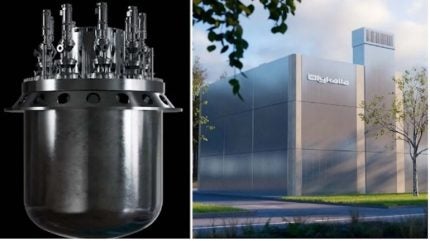
Swedish nuclear energy company Blykalla has been selected for funding by the European Union’s European Innovation Council’s Accelerator Programme. Out of 1,211 applicants, 71 companies were selected for support. Funding for Blykalla comprises a €2.5m ($2.6m) grant and €15m in equity investment. Blykalla is developing and small modular reactors (SMRs) using lead-cooled fast reactor technology.
Jacob Stedman, CEO of Blykalla said the funding “not only validates the potential of our SEALER technology but also accelerates our mission to develop Europe’s first advanced SMR. The support from the EU EIC Accelerator programme will be pivotal as we progress towards achieving our development milestones and expanding our strategic partnerships.”
Blykalla founded in 2013, is a spin-off from the KTH Royal Institute of Technology in Stockholm. Its SMR prototype SEALER (Swedish Advanced Lead-cooled Reactor) design is a fast compact reactor with passive safety. Each reactor will have a 55 MWe capacity, which can be increased by installing multiple units at the same location. The reactor is designed with the smallest possible core that can achieve criticality in a fast spectrum using 19.9% enriched nitride fuel.
The equity investment is executed through the EIC Fund, which is financed by the European Commission and managed by the European Investment Bank (EIB). Blykalla noted that, as part of the upcoming funding round, the EIC Fund will participate with a €15m ticket, “significantly de-risking the company’s next phase and reinforcing the strong market confidence in its vision”.
Blykalla’s goal is for its first 140 MWt SEALER-55 commercial reactor to be ready for operation in the early 2030s. While its website has details of the overall design, fuel and the safety features, there are no details about the fast reactor technology. This is currently only operational in Russia, where the world’s first ever lead-cooled fast reactor is now nearing completion after decades of government supported research and development. Hitherto only sodium has been used as the liquid metal coolant in fast reactors.






